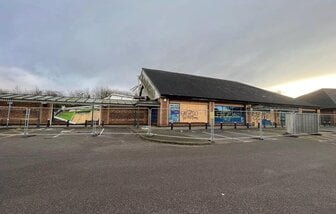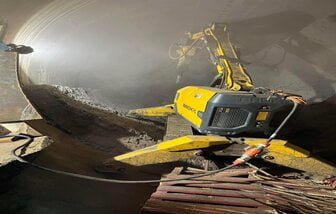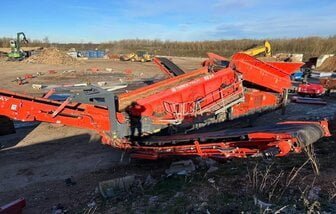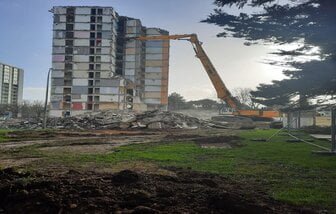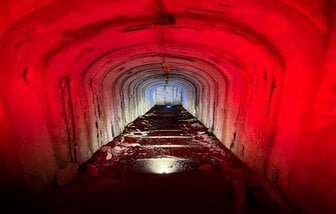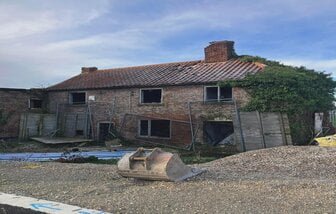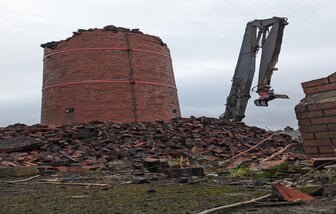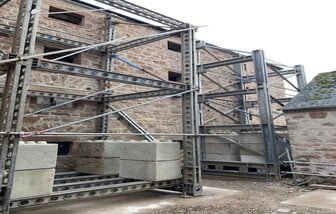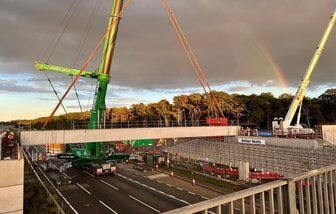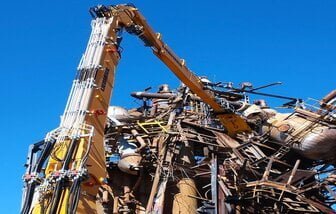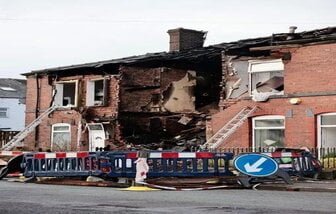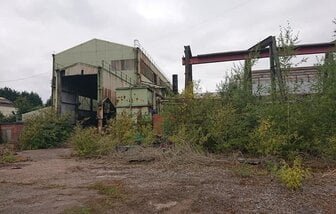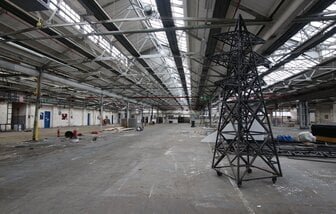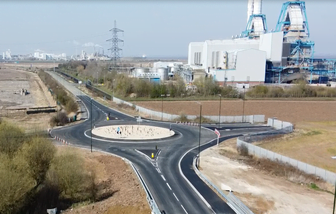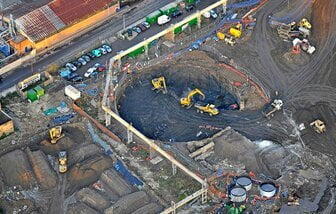TOTAL Brownfield Remediation & Land Clearance Contractors Preston
Explore the importance of brownfield contaminated land remediation in Preston. Leyland, Bamber Bridge, Penwortham, Our experienced professionals at the complete group specialize in assessing and restoring previously developed sites to ensure public health and environmental safety. We offer comprehensive land clearance services, including hazardous material removal and land preparation for redevelopment. By choosing our trusted services, stakeholders can promote community safety and support economic growth in the region. Ensure responsible management of your land with our expert remediation solutions.
Expert Solutions for Brownfield Contaminated Land Remediation in Preston
Brownfield sites are previously developed land that may be contaminated due to industrial activities or other previous uses. Remediating these sites is crucial for public health, environmental safety, and economic development. In Preston, the challenge of brownfield remediation is tackled by experienced professionals who understand the complexities involved.
Why Choose Experienced Professionals for Remediation?
The remediation process often requires specialized skills and knowledge. The complete group has extensive experience in handling brownfield contaminated land remediation across Preston. Their expertise ensures that the contamination is properly assessed, and effective strategies are implemented to restore the land to a safe condition for future use.
Comprehensive Land Clearance Services
In addition to remediation, the complete group offers comprehensive land clearance services. This includes removing hazardous materials, decommissioning structures, and preparing the land for redevelopment.
By engaging their trusted and formal services, stakeholders can rest assured that their land will be managed efficiently and responsibly.
Overall, choosing trustworthy professionals like the complete group for brownfield contaminated land remediation in Preston not only promotes environmental responsibility but also enhances community safety and supports economic growth in the region.
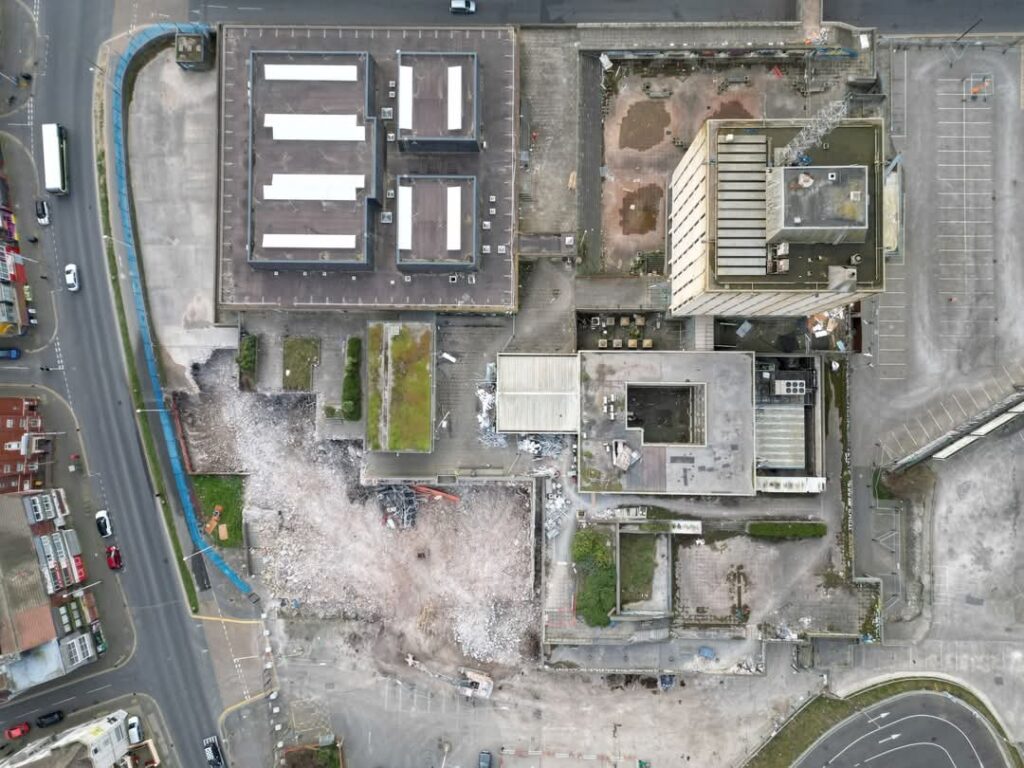
TOTAL Land Clearance Company Preston
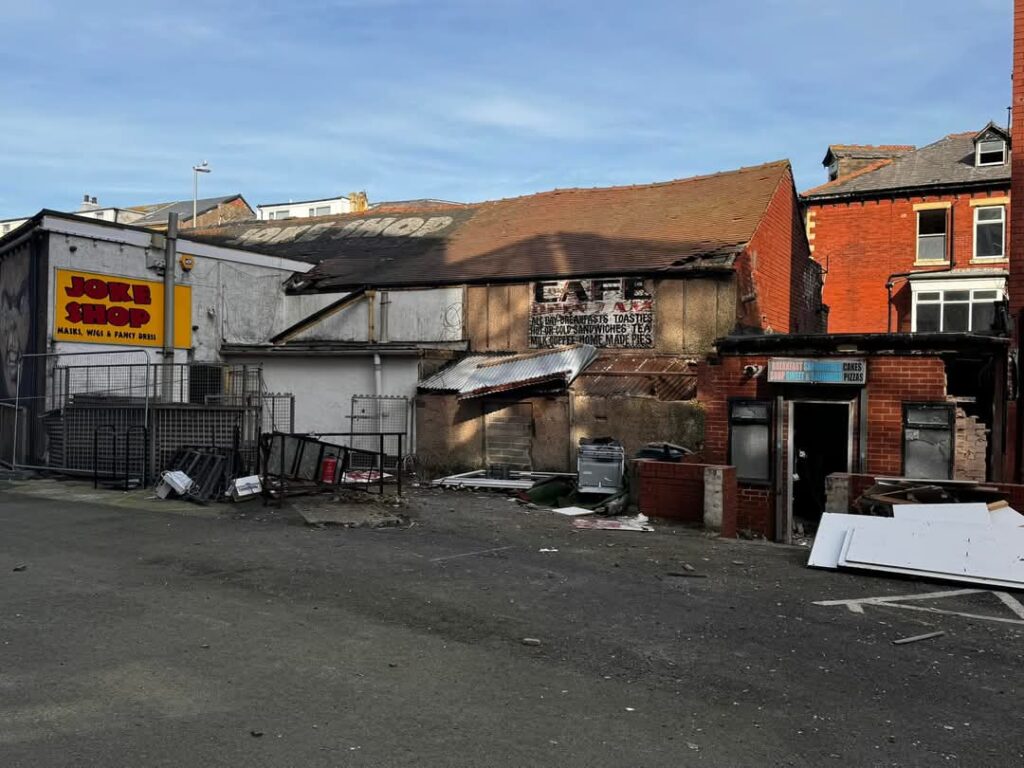
Comprehensive Group Offer: Cost-Effective Land Clearance Solutions
In today’s rapidly developing world, effective land clearance solutions are essential for both residential and commercial projects.
Whether dealing with extensive fly tipping or undertaking mass site decontamination, our complete group offer ensures that we provide the most cost-effective strategies to meet your specific needs.
Our Approach to Fly Tipping and Site Decontamination
Fly tipping poses serious environmental challenges, requiring specialized attention to remove debris responsibly and sustainably. Our team is equipped with the necessary equipment and expertise to handle all forms of fly tipping, ensuring that the local ecosystem remains protected.
Additionally, when it comes to mass site decontamination, we follow stringent protocols that adhere to current regulations, guaranteeing a thorough and safe clearance.
Why Choose Our Land Clearance Solutions?
Choosing our cost-effective land clearance solutions means partnering with a trustworthy team dedicated to excellence. We prioritize customer satisfaction and adhere to the highest standards in our operations.
With tailored services that address both fly tipping and decontamination needs, we guarantee a streamlined process that minimizes disruptions while maximizing efficiency. Reach out today to learn more about how we can assist with your land clearance projects.
Frequently Asked questions Regarding Remediation in Preston
What is a Brownfield Site?
A brownfield site is defined as any previously developed land that is no longer in use and may present environmental hazards due to contamination. Typically, these sites were once utilized for industrial, commercial, or residential purposes but have since been abandoned or underutilized due to various factors, including economic shifts, changes in land use preferences, or environmental concerns. As urban areas evolve, these brownfield sites often stand in stark contrast to their surroundings, raising significant challenges for communities and policymakers.
One of the primary characteristics of a brownfield site is the potential presence of hazardous substances, pollutants, or contaminants that could pose risks to human health and the environment. The process of identifying such sites often involves comprehensive assessments to determine the extent of contamination and the necessary remediation efforts. Factors contributing to the abandonment of these sites include financial constraints, regulatory pressures, or even public perception issues related to environmental safety.
In contrast, greenfield sites refer to undeveloped land, typically in rural or suburban areas, where there’s no prior construction or contamination. The distinction is crucial as it highlights the challenges and opportunities associated with the redevelopment of brownfield sites. Redeveloping these areas not only helps in urban revitalization but also plays a significant role in promoting sustainable land use. By transforming brownfield sites into functional spaces, such as parks, housing, or commercial developments, communities can benefit from reduced urban sprawl, improved public health, and enhanced local economies.
Addressing the complexities surrounding brownfield sites requires collaborative efforts from various stakeholders, including government agencies, private developers, and community organizations. Recognizing their characteristics and implications is vital in making informed decisions regarding land reuse and urban planning.
Historical Context of Brownfield Sites in Preston
Preston, located in North West England, has a rich industrial heritage that significantly contributes to the prevalence of brownfield sites in the area. Historically, the city flourished during the 19th century, emerging as a key player in the textile industry, particularly in cotton manufacturing. This rapid industrial growth attracted a significant workforce, leading to a sprawling urban landscape designed to accommodate factories and associated housing. However, as the demand for textile products waned through the mid-20th century, particularly post-World War II, many manufacturing facilities began to close. This decline in industry left behind numerous derelict sites, marking the genesis of Preston’s brownfield landscape.
The closure of factories and the shift in economic focus away from manufacturing have played a pivotal role in determining the character of the urban environment. These transitions not only led to a stark reduction in local employment opportunities but also contributed to the abandonment of large tracts of land. Subsequently, many of these sites became contaminated, raising public health concerns and prompting the need for remediation efforts. For example, the former Whitbread brewery site on Brook Street, which ceased operations in the late 20th century, stands as a striking representation of the challenges associated with brownfield regeneration.
Additionally, local governmental initiatives aimed at revitalizing these brownfield areas reflect the city’s commitment to addressing historical neglect. The Preston City Council has actively promoted brownfield redevelopment through various policies, further seeking to reclaim these sites for community use. This historical context illustrates not only the economic and social transformations in Preston but also the ongoing legacy of its industrial past, highlighting the importance of understanding brownfield sites in the overall narrative of urban development.
Environmental and Health Implications
Brownfield sites in Preston present numerous environmental and public health concerns due to their history of contamination. Typically, these areas may have been previously developed for industrial use, leading to the potential presence of hazardous waste, heavy metals, and other pollutants. The effects of such contaminants can be detrimental to local ecosystems, soil health, and water quality, creating a ripple effect that ultimately impacts the surrounding community. Moreover, contaminated soil and water sources can lead to bioaccumulation of harmful substances within the food chain, posing severe health risks to residents who consume locally sourced produce.
Exposure to toxic materials commonly found at brownfield sites can result in acute and chronic health issues, such as respiratory problems, skin diseases, and increased cancer risk. Vulnerable populations, including children, the elderly, and individuals with pre-existing health conditions, are particularly at risk from these hazards. It is crucial for local authorities to conduct thorough assessments of estimated contamination levels and potential pathways for exposure in order to safeguard public health. Engaging community stakeholders in the assessment process not only demystifies the remediation efforts but also establishes a collaborative atmosphere for enhancing local well-being.
Effective remediation of brownfield sites is imperative in mitigating the environmental and health risks associated with these areas. The regulatory frameworks governing remediation actions, such as the Environmental Protection Act, lay the groundwork for necessary action and compliance for developers. In Preston, these measures ensure that any redevelopment of brownfield sites includes proper risk assessments and safety protocols aimed at protecting both the environment and community health. Through diligent remediation efforts, brownfield sites can be transformed into safe, usable spaces, providing ecological benefits and fostering healthier communities.
Redevelopment Opportunities and Challenges
Redeveloping brownfield sites in Preston presents a unique set of opportunities and challenges for stakeholders involved. One of the primary advantages of redeveloping these sites is the potential for revitalization of communities. Transforming old industrial areas into residential, commercial, or recreational spaces not only enhances the aesthetic appeal of the neighborhood but also fosters a sense of community belonging. Additionally, such redevelopment can significantly increase property values, which in turn stimulates local economies through increased tax revenues and job creation.
The rise of sustainable development has further emphasized the importance of brownfield redevelopment. When brownfield sites are transformed, they often incorporate green building practices, parks, and public spaces, contributing to an environmentally friendly urban landscape. This aligns with growing public interest in sustainable living and has the potential to attract new residents and businesses to the area.
Despite these opportunities, developers and local governments face several challenges when pursuing brownfield redevelopment. Financial hurdles are often significant, as the cost associated with soil remediation and decontamination can be substantial. Securing funding from public and private sources is critical, yet it remains a complex process. Regulatory compliance is another significant concern; navigating environmental regulations and obtaining necessary permits can be time-consuming and demanding. Moreover, community opposition can complicate redevelopment efforts. Stakeholders may resist changes due to fears about displacement, loss of historical character, or environmental concerns, necessitating effective public engagement and communication strategies.
Examining successful brownfield redevelopment initiatives in Preston reveals valuable lessons. Projects that prioritized community involvement and addressed concerns proactively tended to gain broader support. Furthermore, partnerships between local governments, developers, and environmental agencies played a crucial role in overcoming challenges. By highlighting these collaborative efforts, future redevelopment projects can learn from and build upon Preston’s experiences to enhance the success of brownfield revitalization initiatives.
Understanding Brownfield Sites in Preston
Brownfield sites are previously developed lands that have become underutilized or abandoned due to real or perceived environmental contamination. These sites often arise in urban environments, where industrial, commercial, or agricultural activities have historically taken place. The presence of contaminants such as heavy metals, petroleum residues, or chemicals poses a significant challenge to redevelopment efforts and community safety.
The characteristics of brownfield sites can vary widely, but common traits often include irregularly shaped parcels, complex ownership histories, and environmental assessments indicating potential pollution. The significance of these sites in urban planning cannot be overstated, as they represent opportunities for revitalization, community enhancement, and economic growth. Redeveloping brownfield sites can lead to the reclamation of valuable land, reduction of urban sprawl, and improvement of public health outcomes by reducing exposure to hazardous substances.
The historical context of brownfield sites is crucial to understanding their significance. Many of these properties were once home to factories, gas stations, or other facilities that utilized toxic substances in their operations. As industrial practices evolved, these sites were often abandoned or fell into disuse without proper remediation processes. The lack of adequate environmental oversight in the past has resulted in these lands becoming hotspots for contamination, now requiring thorough investigation to identify and address pollution issues.
In conclusion, a foundational understanding of brownfield sites reveals their complexity and the pressing need to assess sources of contamination. By recognizing the historical uses and potential hazards associated with these lands, stakeholders can make informed decisions about their future uses and the environmental implications thereof. Such awareness plays a crucial role in creating sustainable urban environments and fostering community resilience.
Pollutants from Animal Processing Industries
Animal processing industries play a significant role in the food supply chain, but they also contribute to environmental pollution, especially on brownfield sites. These sites, often characterized by their previous industrial use, can harbor various pollutants as a result of animal processing activities. Among the most common contaminants are organic waste, pathogenic bacteria, and a variety of chemicals used during the processing stages.
Organic waste, which includes blood, bones, fat, and viscera, is prevalent in this industry. When improperly managed, this waste can leach into the soil and water systems, contributing to nutrient loading and triggering harmful algal blooms in nearby water bodies. Furthermore, the presence of animal-derived organic materials can elevate the risk of bacteria proliferation, including pathogens such as Salmonella and E. coli. These bacteria can pose serious health risks to humans and other organisms if they enter the food chain or contaminate drinking water supplies.
In addition to organic waste and bacteria, animal processing facilities often utilize a range of chemicals, such as cleaning agents, preservatives, and sanitizers, which can also lead to contamination. These substances can seep into the ground or be released into the surrounding environment, further exacerbating the pollution on brownfield sites. Their toxicological effects can vary widely, with some chemicals being linked to long-term health effects such as cancer, reproductive issues, and endocrine disruption.
The cumulative impact of these pollutants from animal processing industries can lead to significant environmental degradation and public health concerns. Therefore, understanding the specific types of contaminants associated with this sector is critical for the assessment and remediation of brownfield sites in Preston. Effective strategies for managing and mitigating these pollutants will be essential in reducing their detrimental effects on both the environment and local communities.
Chemical Contaminants from Industrial Activities
Brownfield sites often bear the legacy of industrial activities, where chemical contaminants are prevalent due to historical practices. Industries such as metal treatment, extraction, and power generation are notable sources of various hazardous substances. These operations can introduce chemical contaminants into the environment, posing significant risks to human health and ecosystems.
One of the primary concerns is arsenic, a toxic element that can originate from mining activities, where it is commonly associated with gold and copper ores. During the extraction and processing of these metals, arsenic can leach into surrounding soil and groundwater, causing soil contamination. This element is particularly concerning due to its carcinogenic properties and potential to adversely affect both human health and wildlife.
In addition to arsenic, heavy metals such as lead, cadmium, mercury, and chromium are frequently found in brownfield sites, especially those near former industrial zones. These metals can result from a variety of activities, including battery manufacturing, metal finishing, and waste disposal. Lead, for example, can enter the environment through lead-based paints and leaded gasoline, and it accumulates in the soil, posing severe health risks, particularly to children.
The mechanisms of chemical contamination often involve the leaching of these substances into nearby water sources or their absorption by soil, leading to bioaccumulation in plants and animals. Once introduced into the ecosystem, these contaminants can disrupt biological processes, hinder plant growth, and contaminate the food chain.
Assessing the impact of these heavy metals and chemical contaminants on human health is vital. Long-term exposure can lead to various health issues, including neurological impairments, developmental disorders, and chronic diseases. Therefore, understanding the sources and pathways of contamination from industrial activities remains a critical aspect of environmental management on brownfield sites.
Impact of Landfills and Fuel Stations on Contamination Levels
Brownfield sites, particularly those housing landfills and fuel stations, pose significant challenges in terms of environmental contamination. Landfills, where waste is disposed of, can generate leachate, a liquid formed when rainwater filters through solid waste. This leachate often contains harmful pollutants such as heavy metals, organic compounds, and pathogens that can leach into surrounding soil and groundwater, significantly impacting local ecosystems. The threat posed by leachate emphasizes the importance of proper waste management practices and the necessity for ongoing monitoring after a landfill’s closure.
Fuel stations, on the other hand, are often associated with spillages and leaks from underground storage tanks. These fuels contain hydrocarbons, which can migrate through the soil and contaminate groundwater supplies. When spills occur, the environmental implications can be severe, leading to health risks for nearby communities and ecological degradation. Therefore, understanding the patterns of contamination from both landfills and fuel stations is critical for the assessment of brownfield sites.
Efforts to regulate and mitigate these contamination sources are paramount. Regulatory frameworks exist to govern the management of waste and petroleum products, including requirements for leak detection systems and emergency response protocols at fuel stations. Additionally, remediation strategies, such as bioremediation and soil excavation, are being employed to restore contaminated brownfields. These strategies aim to reduce the contaminants’ presence and rehabilitate these areas for safe use. The combination of vigilant regulatory oversight and effective remediation practices is crucial to addressing the long-term impacts of contamination from landfills and fuel stations on brownfield sites in Preston.
What is Brownfield Remediation?
Brownfield remediation is the crucial process focused on the cleanup of contaminated industrial or commercial properties, known as brownfield sites. These areas may have been previously utilized for purposes that led to environmental hazards resulting from hazardous substances or pollutants. Through effective remediation strategies, these sites can be restored, ensuring they are safe for future development or reuse.
The Importance of Brownfield Remediation in Preston
In Preston, brownfield remediation plays a significant role in urban development and environmental health. As the city grows, the ability to reclaim and redevelop these sites helps to reduce urban sprawl, protect green spaces, and revitalize local areas. This process not only enhances the aesthetic and economic value of neighborhoods but also mitigates health risks associated with land contamination.
Techniques Used in Brownfield Remediation
Several techniques can be employed in brownfield remediation, depending on the degree of contamination and the particular site conditions in Preston. Common methods include excavation and removal of polluted soil, groundwater treatment, and bioremediation, which utilizes living organisms to break down contaminants. By applying these strategies, remediation experts can ensure the site meets necessary health and safety standards, paving the way for redevelopment.
TOTAL Commercial Demolition Contractors Preston
As a leading demolition contractor with exceptional experience in the demolition of all types of commercial buildings and structures, we are committed to delivering top-notch services that meet and exceed your expectations.
TOTAL Robotic Demolition
At Total Regen, we understand the unique challenges that confined spaces present during demolition. That’s why we have invested in advanced robotic demolition equipment that allows us to access and demolish structures
TOTAL Crushing & Screening Contractors Preston
Total Regen, your trusted provider of comprehensive crushing and screening services throughout the United Kingdom. With our fleet of mobile crushers and screening units, we have the capability to handle projects of all sizes and complexities.
TOTAL High-Rise Demolition Contractors Preston
We use high-reach convertible excavators that allow us to remove pieces from the building while preventing damages to the other structures. Even when there are two or more buildings standing next to each other, we can take down the building down with accuracy
TOTAL Asbestos Removal Company Preston
With years of experience in the industry, our team of experts has the knowledge and skills to handle all types of asbestos removal projects. We stay up-to-date with the latest industry regulations and best practices.
TOTAL House Demolition
At Total Regen, we specialise in providing comprehensive house demolition services. Whether you need to demolish an entire house or just a part of it, our team of experts is here to assist you every step of the way.
TOTAL Chimney Demolition Contractors Preston
At Total Regen, we are proud to offer our clients extensive experience in the demolition of commercial chimneys. Our team of experts is highly skilled and equipped to handle projects of any size and complexity.
TOTAL Facade Retention
At Total Regen, we take pride in our extensive experience and expertise in facade retention. With years of successful projects under our belt, we have established ourselves as industry leaders in providing top-notch solutions for preserving and enhancing the integrity of building facades
TOTAL Bridge Demolition Preston
Total Regen is a trusted and reputable company that offers specialist bridge demolition services. With our extensive experience and expertise in the field, we are well-equipped to handle all types of bridge demolition projects.
TOTAL Decommissioning
At Total Regen Excel, we specialise in building and asset decommissioning. With our extensive experience and expertise, we have become trusted partners for industry majors in developing approved codes of practice and safe-work procedures
TOTAL Building Soft Strip Out Preston
Total Regen Excel is a leading company specializing in all types of soft strip out demolition. With our extensive experience, we have successfully completed numerous large and small projects throughout the United Kingdom.
TOTAL Emergency Demolition
Total Regen is a trusted provider of emergency demolition services across the United Kingdom. With our experienced and dedicated multi-disciplinary emergency response team, we are equipped to handle any emergency situation swiftly and efficiently.
TOTAL Industrial Demolition Contractor Preston
At Total Regen, we specialise in delivering cost-effective industrial demolition projects that are completed on time and within budget. With our expertise and experience, we understand the complexities involved in industrial demolition and have the necessary processes in place
TOTAL Hazardous Materials
At Total Regen, we specialize in providing comprehensive hazardous and contaminated waste identification, treatment, and removal services. With our highly skilled team and state-of-the-art facilities, we are committed to finding safe and efficient management solutions for all your waste
TOTAL Dismantling Contractors
Total Regen has established itself as a leading expert in the field of dismantling structures and plant. Our team brings together a wealth of knowledge and experience in engineering and demolition methodologies, allowing us to offer innovative and cost-effective solutions to engineering contractors.
TOTAL Partial Demolition
At Total Regen, we specialize in providing professional demolition services for both residential and commercial properties. Our team of experts is trained and equipped to handle various types of demolitions, whether it’s a small part of a structure or the entire building.
Additional services that we offer that may interest you
TOTAL Groundworks & Civils
Complete Group has a strong track record in the design and construction of a wide range of Civil Engineering and Infrastructure projects, ranging from minor road improvements to major infrastructure schemes.
TOTAL Construction
At Complete Group, we specialise in a wide range of construction services, including refurbishments, fit outs, complex construction projects, and interior design. Our team of skilled professionals is dedicated to delivering high-quality results
TOTAL Tarmac Surfacing
We specialise in providing top-quality tarmac surfacing and paving services throughout the UK. Our team of skilled professionals is dedicated to delivering exceptional results, ensuring that every project is completed to the highest standards
TOTAL Brownfield Remediation
Complete Group have accumulated extensive experience contaminated brownfield land remediation contractor operating throughout the United Kingdom. We deliver an extensive range of brownfield remediation solutions.
Ready to start your project ?
Committed to Excellence on all levels
Let's Work Together
To get started, for general enquiries simply complete the form below. Provide us with your project details, and our team will review your requirements. We will then get back to you with a customised solution that fits your needs. Whether you have a small-scale project or a large-scale development, we have the expertise and resources to handle it. Once we have received your submission, you will receive a confirmation email (Please check all your email boxes)
If you prefer, and have a project in mind and seeking a price you can also send us your project documents and any photographs directly to Price@totalregen.co.uk. We will carefully examine your documents and provide you with a competitive quote together with a timescale from inception through to completion for your project.

